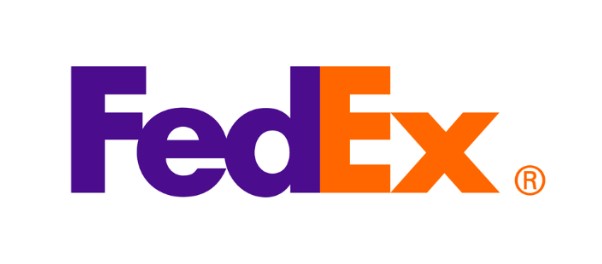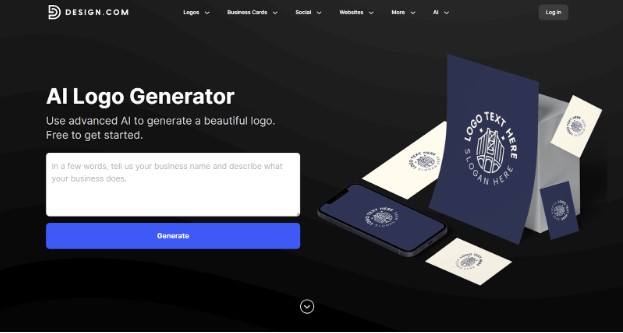Did you know that 75% of consumers recognize a brand by its logo? It's the first thing people notice about it.
That's saying something about the importance of a good, memorable, and easily identifiable logo. In other words, a good logo helps you stand out from the competition.
While creating a captivating logo is important, ensuring it connects with your audience and leaves a lasting impression is even more crucial. That's why you need to put it to the test.
For this reason, we'll walk you through the process of testing your logo design. That way, you can establish long-term brand recognition.
Let's begin.
See if It's Recognizable When Scaled Down
 The key to designing a good logo is to keep it simple. So when it's printed on different sizes of paper and viewed on multiple-sized screens, it doesn't lose its meaning.
The key to designing a good logo is to keep it simple. So when it's printed on different sizes of paper and viewed on multiple-sized screens, it doesn't lose its meaning.
One of the crucial criteria a good logo must meet is the ability to be instantly recognizable when resized to a smaller scale.
The more minimalist a logo is, the fewer details a viewer needs to remember. And when it becomes complex, it risks losing its significance when zoomed in or resized for various applications.
While there are millions of brands in existence, only a few have truly reserved their place in our memories. When we consider well-designed logos that remain easily recognizable, even on tiny phone screens, names like Facebook, Nike, and Apple immediately spring to mind.
For instance, the iconic half-bitten Apple logo can be spotted effortlessly on phone apps, adorning backpack stickers, serving as profile pictures, and appearing in thumbnails.
That tells you that no matter how much you shrink your logo, it should retain the fundamental design elements.

After receiving your logo from the designer, you should scale it down to ensure it looks good and remains identifiable. If it doesn't look like a messy smudge and is clear and legible in a small size, then it's good to go.
Test if It Looks Good in Black and White
When designing a logo, clarity should be the primary consideration. Start your design process in black and white and test for contrast, even if it's tempting to think about color combinations from the get-go.
Steer clear of those distractions and design the logo in black and white. After that, see if the logo's design elements remain recognizable in two tones.
If your logo can tell a story and remains easily identifiable when its colors are reversed, then your logo has passed the test.
There are plenty of brands with excellent designs, but if we had to pick one logo for illustration, then we'd pick the Facebook logo.
The emblem doesn't have a lot going on with it. It only has a small 'f' icon inside a blue square box.

Even if you reverse its colors and look at it in black and white, it'll still be easily recognizable. This should also hold true for your logo design.
For example, the Nike swoosh is also a testament to a good logo design. You can recognize the swoosh from miles away because it's so easily noticeable.

One prominent feature of the Nike logo is that it was originally designed in black and white. So, when you switch colors, the white becomes black, and the black becomes white. Remarkably, the swoosh still retains its significance of mimicking motion.
A logo that looks great in black and white offers various advantages. It can serve as a profile picture, be used as a watermark, and be incorporated into items like digital business cards and marketing brochures, among other uses.
Check for Legibility
Your brand logo should be recognizable within seconds, and it shouldn't make people scratch their heads.
Truth be told, confusing logos can negatively impact your business and brand reputation.
That's why simplicity is a core design principle. In other words, it prioritizes functionality and ease of understanding over all else when designing a logo.
To test your logo, check its design elements for functionality and ensure they're easy to understand and remember.
Whether you opt for a text-based logo, an image-based one, or a combination of both, prioritize legibility above all else.
FedEx is a good example of this, featuring a basic text logo with a hidden arrow symbol.

It can easily adjust to various digital screens and print paper sizes while remaining highly readable. It's quite minimalistic, maintaining its meaning in black and white and effectively conveying the message.
When creating a logo, it's essential to consider key elements such as kerning, leading, font combinations, and size. These visual elements ensure that the logo is clear and effectively communicates its message.
Designers may try to demonstrate their creativity by including various abstract elements to create a distinctive logo, but this could cause more harm than good for your intended audience.
As a result, ensuring legibility should take precedence, and it's crucial to communicate this requirement clearly to the designer.
Remember: clear is better than clever.
Another factor that affects the legibility of a logo design is the background. A good logo design is devoid of a distracting background.
Ensure your logo stands out on its own. You can use a free background remover to ensure your logo doesn't have a distracting background, allowing the branding message to be conveyed clearly.
Do A/B Testing
There's no denying that getting things right on the first try is challenging. That's why it's essential to create multiple versions of a logo and evaluate them for various factors, such as:
- Scalability
- Simplicity
- Legibility
- Contrast
- Clarity
- Color
- Font
When you conduct A/B tests on your designs, you can analyze which design performs better than the others. This process helps gain insights into usability, impact, and increase conversion rates.
While this step is crucial, it's costly and time-consuming, so you can always rely on AI tools to automate and accelerate processes.
For this reason, Design.com stands out. Here's why:
AI logo generation
Design.com utilizes artificial intelligence technology to generate professional logo designs efficiently. The platform's AI algorithms process your business name, industry sector, and style preferences to create appropriate logo options from its 350,000+ template library. This technology enables users to explore multiple design directions in mere seconds.

Accessibility and user experience
The platform features an intuitive interface designed for users across all skill levels. Business owners, entrepreneurs, and marketing professionals can create logos without graphic design training. Design.com's streamlined workflow guides users through design customization in a logical sequence that reduces decision fatigue.
Comprehensive customization tools
Beyond initial AI logo designs, Design.com provides extensive modification capabilities. Users can adjust:
- Color palettes and individual color values
- Typography selection and font pairings
- Icon shapes and graphic elements
- Layout composition and spacing
- Size and proportion adjustments
This flexibility ensures the final logo aligns precisely with brand identity requirements and can be refined through iterative testing.
Integrated brand asset suite
Design.com extends beyond logo creation to offer a complete brand identity solution. The platform enables users to develop:
- Website branding elements
- Business card designs
- Social media profile graphics
- Letterhead and invoices
- Marketing collateral templates
All assets maintain consistent branding across touchpoints, creating cohesive visual identity systems within a single platform environment.
Think of it as a comprehensive approach that streamlines your branding efforts. This is just one example of how AI tools for e-commerce are helping business owners automate everything from brand design to marketing. It's the epitome of working smarter, not harder, to test logo variations to learn what your audience loves.
Then, once you've ironed out all the kinks, you can bring the initial design to The Logo Company to generate the final version of your professional logo.
Use Social Media Polls To Gather Audience Feedback

It's crucial to prioritize feedback from your target audience. Why? Their opinions hold the greatest significance when evaluating your logos for their effectiveness in terms of functionality, impact, and conversion.
However, obtaining this feedback can be challenging, as it requires identifying suitable platforms to connect with them.
And, in such a situation, there's no better platform than social media. It lets you communicate with your target audience from your lead list, hear their opinions, and gather feedback on your logo designs.
There are several ways to approach this process.
You can either create polls on Instagram, Facebook, Twitter, LinkedIn, or social channels where your potential customers reside or create surveys on third-party apps and post them on social media.
You may use tools like SurveyMonkey or Google Forms to make elaborate surveys and use them to get your target market's insights on the different logo designs you're testing
That way, you can get comprehensive customer feedback and valuable insights to understand which logo design they prefer and why.
To ensure you get precise feedback, be transparent with your audience. Tell them the end goal of the feedback and follow up with them.
Testing survey templates and getting the proper feedback from your target demographic can help you make better branding decisions, so don't forget to take this step.
Wrapping Up
We've examined the importance of a logo for a brand and the various ways it can be evaluated for effectiveness and impact. But during these processes, we can't ignore the fact that designing a logo takes a lot of time, energy, and even thousands of dollars.
So you somehow have to mitigate the time and energy costs. There's a way to do so: hand over the responsibility to professional designers.
At DesignCrowd, we provide custom logo designs that'll make your business stand out and wow competitors and customers alike. Check our designs now.
Author Bio

Luca Ramassa
Outreach Specialist at LeadsBridge, passionate about Marketing and Technology. My goal is to help companies improve their online presence and communication strategy.
Written by DesignCrowd on Wednesday, November 19, 2025
DesignCrowd is an online marketplace providing logo, website, print and graphic design services by providing access to freelance graphic designers and design studios around the world.

